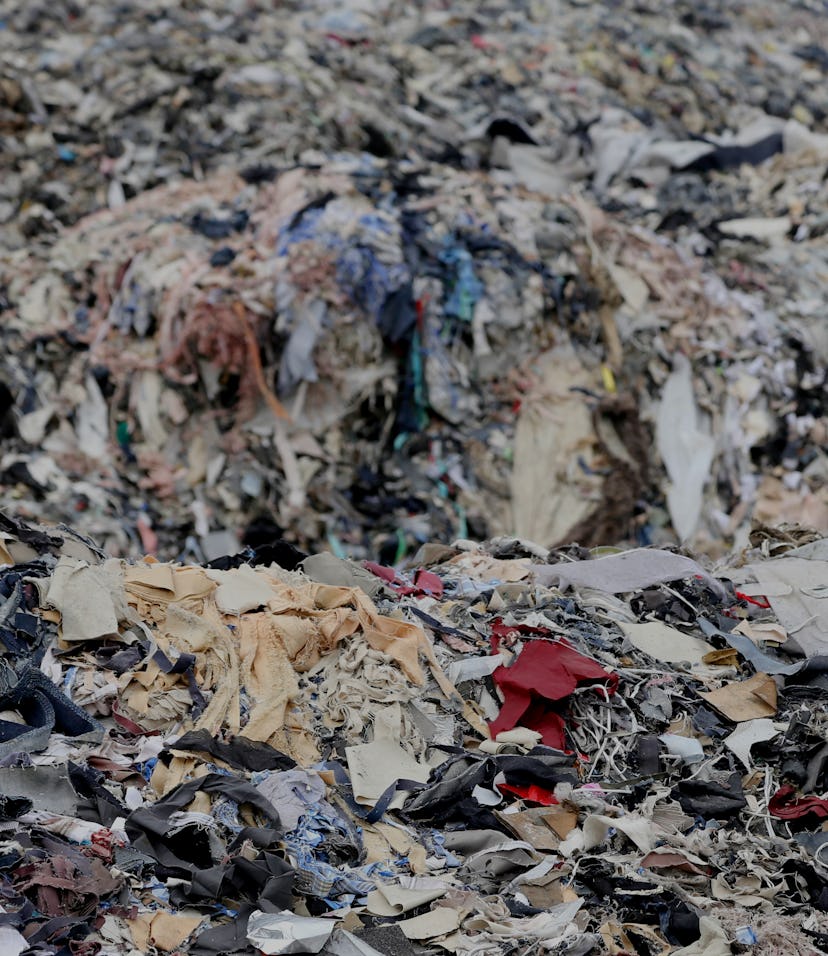Style
Microfibers from clothes can damage lungs and slow COVID-19 recovery
A recent study suggests we could be breathing in tiny fiber particles by doing laundry and even wearing clothes — but not everyone should be alarmed.

Microfibers from our clothes are polluting the planet and our lungs, multiple research centers suggest. First reported by Sourcing Journal, researchers from Groningen University, the Netherlands Organization for Applied Scientific Research, and the Plymouth Marine Laboratory found that polyester and nylon textiles interfered with lungs’ ability to grow and develop. As people are exposed to these microfibers on a daily basis through wear, laundry, or other factors, the textiles could present additional risks to children, whose lungs are still developing.
Those who suffer from lung damage, too — including those recovering from COVID-19 — are at risk. “A virus damages lung tissue, and if you have to recover from that while your lungs are filled with fibers that impede this recovery, then you have another problem on top of COVID-19,” Barbro Melgert, associate professor, pharmaceutical immunology at Groningen University and the study’s principal investigator, said in a statement.
Trash is in the air — The study, Melgert added, builds on research conducted by Fransien van Dijk and his colleagues on the impact of microplastics on the lungs. The results of Van Dijk’s study found that polyester might be less disruptive to airway function than nylon, as the lung immune system mainly attacks the latter’s microfibers.
Both could be harmful to someone with weaker or recovering lungs, however, and the findings arrive at a time where most of us are wearing cloth masks to protect ourselves from COVID-19. Could breathing through a cloth mask be more harmful to us than an N-95 mask, despite the latter being marked as less sustainable?
While the study doesn’t mention cloth masks, it does note that microplastics primarily affect those with developing lungs — so if you’re not a child or pregnant with one, and have a decently healthy set-up, you should be fine. Melgert’s study found that on average, a household generates about 44 pounds of domestic dust a year, six of which consist of microplastics from synthetic clothing, carpets, and furniture. Healthy lungs are able to filter this pollution out, for the most part.
Wearing pollution — And while many credit the fashion industry’s environmental impact to unethical production practices, our clothing still pollutes the planet after wear. Doing laundry allows microplastics from clothing to enter waterways — a single wash can release 1 million microfibers, according to another report. Furthermore, wearing synthetic garments (like nylon and polyester) can produce even greater quantities of microfibers once washed, researchers from the Institute for Polymers, Composites and Biomaterials of the National Research Council of Italy found last year.
Pollute as you wear — Garments can shed microscopic fibers upon wear, too. The aforementioned study found that even a gram of polyester fabric might discharge up to 4,000 tiny fibers during a single conventional wash cycle, while the same material could also shed a similar amount with just three hours of normal wear. With this research in mind, a single person could introduce nearly 300 million polyester microfibers per year to the environment by washing their clothes, and more than 900 million to the air by wearing them.
Here, even thrifted and ethically-produced clothing can’t lessen the microfiber rate of release — and unless you’re planning on going unwashed or naked, solutions are limited. In 2020, scientists from the conservation nonprofit Ocean Wise found that synthetic fibers make up approximately 92 percent of microplastic pollution found in near-surface seawater samples from across the Arctic Ocean, demonstrating the pervasiveness of the problem. Roughly 73 percent of those, the study added, are polyester fibers consistent in size, shape, and type with those shed by clothing and textiles during laundry.
“The striking conclusion here is that we now have strong evidence that homes in Europe and North America are directly polluting the Arctic with fibers from laundry via wastewater discharge,” Peter Ross, lead author of the study and special advisor to ocean conservation nonprofit Ocean Wise, said of the results. “Plastics are all around us, and while it would be grossly unfair to specifically point our finger at textiles as the only source of microplastics to the world’s oceans, we nonetheless see a strong footprint of polyester fibers that are likely to be largely derived from clothing.”
We’re not saying you shouldn’t wash your clothes, but maybe think about the fashion industry’s problem with overconsumption. While any piece of clothing you own, especially those made of polyester or nylon, will shed microfibers, do we really need to be adding to the pile of existing clothes — and thus, existing microfibers?